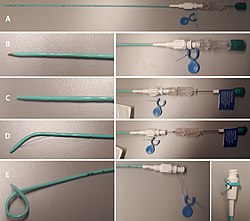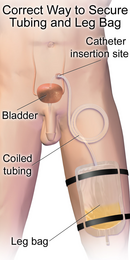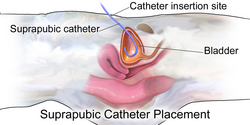A. Overview
B. Both obturator and puncture needle engaged.
C. Puncture needle retracted. Obturator engaged.
D. Both obturator and puncture needle retracted.
E. Locking string is pulled (bottom center) and then wrapped and attach to the superficial end of the catheter.





